The
Methane Time Bomb and the Future of the Biosphere
Dr.
Andrew Glikson
29
April, 2018
The
extraction and transfer from the earth crust to the atmosphere of
every economically available molecule of carbon, including coal,oil,
tar sand oil, shale oil, methane gas, coal seam gas and other forms
of hydrocarbon, constitutes the most significant shift in composition
of the atmosphere since the PETM hyperthermal event about 56 million
years ago[i] and the K-T extinction of the dinosaurs some 66 million
years ago[ii]. Methane, the most potent common greenhouse gas,
billions of tons of which are stored in Arctic permafrost, lakes,
shallow seas and sediments, is emitted as the Arctic warms by an
average of 3-8 degrees Celsius. This release threatens to melt the
large polar ice caps, leading to tens of meters sea level rise and
disappearance of species a rate two orders of magnitude faster than
they would have without human interference[iii]. Compounding this
effect is extensive drilling for coal seam gas, perforating the crust
in several parts of the world and releasing commercial and fugitive
emissions of methane to the atmosphere. Having sent young generations
to kill and die in wars, the powers to be are now presiding over the
greatest mass extinction of nature since 66 million years ago.
The
accumulation of many hundreds of billions tons of unoxidized
methane-rich organic matter in Arctic permafrost and of methane
hydrates in shallow Arctic lakes and seas (Figure 1), before and
since Arctic glaciation about 2.6 Ma-ago, as well as in tropical
bogs, has created a reservoir of carbon whose release to the
atmosphere may have catastrophic effects on the biosphere.According
to the global carbon project[iv][v] up to 1400 GtC (1400 billion
tonnes carbon) on land and ~16,000 GtC in the oceans (Figure 1), much
of which may be potentially released upon a significant rise in
temperatures, would cause widespread melting and defrosting of the
polar ice sheets. This would ensue from major warming feedback
effects from further combustion of fossil fuels from recoverable
resources,estimated as at least >1100 GtC, and potentially from
estimated resources of near 2000 GtC (Figure 2).
Even
the release and dissipation of some ~500 to 1000 GtC to the
atmosphere as methane, which has 25 to 75 times the greenhouse effect
of CO2[vi], may exceed the atmospheric greenhouse concentration of
~500-700 ppm CO2e, leading to further extensive melting of the large
ice sheets and major sea level rise and to a mass extinction event
such as the PETM[vii] (Paleocene-Eocene Thermal Maximum) or even the
Permian-Triassic major mass extinction event[viii].
Figure
1.Vulnerable
carbon sinks. (a) Land: Permafrost – 600 GtC; High-latitude
peatlands – 400 GtC; tropical peatlands – 100 GtC; vegetation
subject to fire and/or deforestation – 650 GtC; (b) Oceans:
Methane hydrates – 10,000 GtC; Solubility pump – 2700 GtC;
Biological pump – 3300 GtC (After Canadell et al. 2007 GCTE-IGBP
Book series; The Global carbon cycle; UNESCOSCOPE policy briefs; Vol.
2. Courtesy P. Canadell)
Figure
2 Estimates
of fossil fuel resources and equivalent atmospheric CO 2 levels,
including (1) emissions to date; (2) estimated reserves, and (3)
recoverable resources (1 ppm CO 2 ~ 2.12 GtC) (Hansen et al.
2012)[ix].
Methane
release from permafrost
Early
warnings are manifest. Expeditions along the East Siberian Arctic
Shelf in 2011 led by the Russian scientists Igor Semiletov and
Natalia Shakova identified a large number of km-size sea bed
structures from which methane plumes were bubbling[x]. The East
Siberian Arctic Shelf (ESAS) is reported to be highly perforated and
close to thawing. Reported release of methane from this region
estimated as 150 megatons carbon per year[xi] drove atmospheric
methane to 2500 ppb. At higher atmospheric altitudes up to ~8 km peak
methane values are higher than 2000 ppb and up to a 2241 ppb, while
global mean methane levels range from 1768 to 1795 ppb[xii]
Shakova
et al. (2014)[xiii]indicate the temperature of submarine permafrost
on the ESAS range from −1.8 to 0 °C. Sonar data indicate methane
bubbles escaping the partially thawed permafrost inject 100–630 mg
methane m−2 d−1 into the overlying water column. Due to
storms a significant drop of methane levels occurs in the water
column as a consequence of escape of the gas to the overlying
atmosphere.
By
winter of 2013, satellite measures were showing an increasing
overburden of methane in the atmosphere above the Arctic (Figures 3 –
5). By summer of 2013, Peter Wadhams, a polar researcher with more
than 30 years of experience studying Arctic sea ice from the vantage
of British navy submarines, published in Nature an article titled
“Climate
science: Vast costs of Arctic change”[xiv],
projecting the economic costs of a catastrophic 50 GtC methane
emission from the ESAS over the coming decades. In reply the climate
scientists David Archer and Gavin Schmidt suggested it will take
centuries or perhaps thousands of years for a significant volume of
methane to be emitted from the Arctic. However, Wadhams suggested
that once the ice cover melts water turbulence will warm the
underlying sediments by significant amount, up to 7 degrees Celsius.
The intense methane bubbling[xv]and caving of permafrost in
Siberia[xvi] (Figure 6) hints at a potential catastrophic
disintegration of large tracts of Arctic permafrost
Figure
3a.A. Nov.
18, 2014.NASA ultra-high-resolution computer model displaying the
distribution and migration of carbon dioxide in the atmosphere.NASA
Goddard Space Flight Center[xvii].
In the NH winter absorption by cold water reduces atmospheric
CO2 while in the NH summer atmospheric CO2 is reduced by
photosynthesis; B. Monthly
average atmospheric methane for January 2016 reaching >1900 ppb at
pressures of 400 hPa (about 4500 meter height)[xviii].
Figure
3b. Variations
inconcentrations of atmospheric methane over the last 800,000 years
and during 1840-2016, displaying the extreme rise from about 800 ppb
to over 1800 ppb CH4.[xix]
The
concentrations of atmospheric methane in the Arctic have been rising
sharply during 2009-2013 (Figures 3b and 4), reaching values above
>1800 ppb CH4,as compared to values below <800 ppb before 1840
and about 400 ppb during the last glacial period. Hot spots of
methane hydrate emissions occur in several parts of the Arctic Ocean
(Figure 5). Field evidence for melting of permafrost and methane
explosion vents and craters abounds in Siberia (Figure 6).
About
one-fifth of the increase in radiative forcing by human-linked
greenhouse gas emissions since 1750 is due to methane. The past three
decades have seen prolonged periods of increasing atmospheric
methane, but the growth rate slowed in the 1990s. From 1999 to 2006
the level of atmospheric methane was nearly constant while strong
growth resumed in 2007[xx] (Figure 3b). Between 2000 and 2006 the
annual methane peak was about 1740 ppb and since 2007 it has
increased by 4-11 ppb per year, peaking at 1803 ppb in September
2015. Since 2007, methane in the atmosphere has steadily increased
worldwide[xxi].
Figure
4.Variations
in atmospheric methane concentrations during 2008 – 2013 mapped by
Leonid Yurganov, Senior Research Scientist, JCET, UMBC, and
member of AMEG, using IASI/METOP satellite data (EUMETSAT)[xxii].
Figure
5.Methane
hydrates release locations. WWF Arctic feedbacks[xxiii].
Figure
6.A.
Permafrost thaw ponds on peatland in Hudson Bay, Canada in 2008.
Wikipedia commons[xxiv]; B. Methane explosion crater northern
Siberia[xxv]
CSG
fugitive emissions
As
if the release of hundreds of GtC carbon from the Arctic permafrost
and shallow water bodies would not be disastrous enough, drilling for
hydrocarbons in the Arctic Sea has commenced and drilling for coal
seam gas is spreading over the continents (Figure 7). The techniques
used to extract natural gas trapped in coal seams, tight sandstone or
shale formations, may allow significant methane leakage and in 2012
it was reported emissions associated with unconventional gas
production in the US were thought to exceed those previously
believed[xxvi]. A paper “Enrichment
of Radon and Carbon Dioxide in the Open Atmosphere of an Australian
Coal Seam Gas Field”
reported that in 2013 fugitive emissions over Australian coal seam
gas (CSG) field (Surat Basin, Tara region, Queensland) yielded
atmospheric CO2 concentrations of ∼390 to ∼467 ppm, the
latter near the centre of the gas field, and a∼3 fold increase in
maximum of radon (222Rn), used as a tracer for fugitive
emissions[xxvii].
Venting
of methane from underground coal mines in the Hunter region of New
South Wales has reached an atmospheric level of 3000 ppb, with levels
of 2000 ppb extending to some 50 km away from the mines[xxviii]. Thus
the paper “Fugitive
methane emissions from natural, urban, agricultural, and
energy-production landscapes of eastern Australia”
(Kelly et al., 2015)[xxix] states:
“In the Hunter Valley, New South Wales, open-cut coal mining district we mapped a continuous 50 km interval where the concentration of methane exceeded 1800 ppb. The median concentration in this interval was 2020 ppb. Peak readings were beyond the range of the reliable measurement (in excess of 3000 ppb). This extended plume is an amalgamation of plumes from 17 major pits 1 to 10 km in length. Adjacent to CSG developments in the Surat Basin, southeast Queensland, only small anomalies were detected near the well-heads. Throughout the vast majority of the gas fields the concentration of methane was below 1800 ppb. The largest source of fugitive methane associated with CSG was off-gassing methane from the co-produced water holding ponds. At one location the downwind plume had a cross section of approximately 1 km where the concentration of methane was above 1800 ppb. The median concentration within this section was 1820 ppb, with a peak reading of 2110 ppb.”
Figure
7.[xxx] Coal
seam gas field, Chinchilla, Qld. Wikipedia commons.
Having
sent young generations to kill and die in wars, the powers to be are
now presiding over the greatest mass extinction of nature since 66
million years ago.
Dr
Andrew Glikson, Earth
and Paleo-climate science, ANU School of Anthropology and
Archaeology, ANU Climate Change Institute, ANU Planetary
Science Institute, Honorary Associate Professor, Geothermal
Energy Centre of Excellence, University of Queensland. Dr. Andrew
Glickson is a frequent contributor to Global Research.
Notes
[iii] https://www.populationmatters.org/about/campaigns-and-projects/welcome-to-the-anthropocene/?gclid=EAIaIQobChMIj7y7j7nc2gIVyky9Ch1wKgXPEAAYASAAEgJJevD_BwE
[vi] https://robertscribbler.com/2013/12/12/arctic-methane-monster-shortens-tail-shakova-semiletov-study-shows-esas-emitting-methane-at-twice-expected-rate/
[x] https://robertscribbler.com/2013/12/12/arctic-methane-monster-shortens-tail-shakova-semiletov-study-shows-esas-emitting-methane-at-twice-expected-rate/
[xi] https://robertscribbler.com/2013/12/12/arctic-methane-monster-shortens-tail-shakova-semiletov-study-shows-esas-emitting-methane-at-twice-expected-rate/
[xii] http://arctic-news.blogspot.com.au/2013/02/dramatic-increase-in-methane-in-the-arctic-in-january-2013.html
[xv] https://robertscribbler.com/2013/12/12/arctic-methane-monster-shortens-tail-shakova-semiletov-study-shows-esas-emitting-methane-at-twice-expected-rate/
[xvii] https://video.nationalgeographic.com/video/news/141119-global-co2-nasa-vin?source=relatedvideo
[xxi] https://theconversation.com/australias-coal-mines-are-pouring-methane-gas-into-the-atmosphere-55394
[xxiv] https://commons.wikimedia.org/wiki/File:Permafrost_thaw_ponds_in_Hudson_Bay_Canada_near_Greenland.jpg
[xxv] http://arctic-news.blogspot.com.au/2015/04/north-siberian-arctic-permafrost-methane-eruption-vents.html
[xxvi] http://www.climateinstitute.org.au/verve/_resources/TCI_CSG_DiscussionPaper_September2012.pdf
[xxviii] https://theconversation.com/australias-coal-mines-are-pouring-methane-gas-into-the-atmosphere-55394
[xxx] https://www.flickr.com/photos/beyondcoalandgas/9313654158; https://creativecommons.org/licenses/by/2.0/
Dr. Andrew Glikson was interviewed by Kevin Hester on Nature Bats Last in February




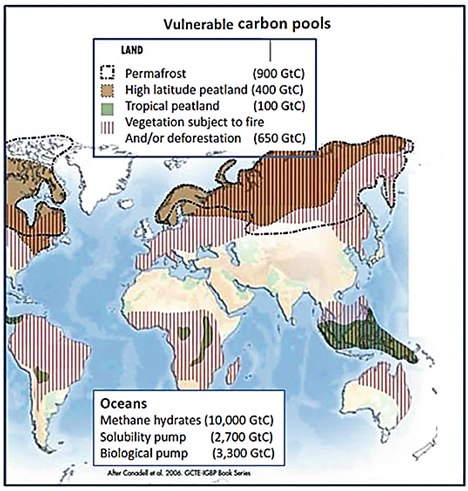

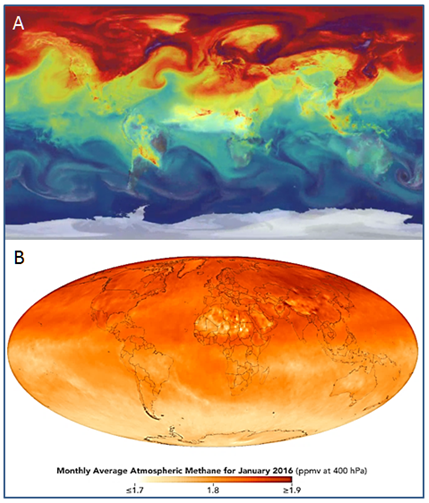
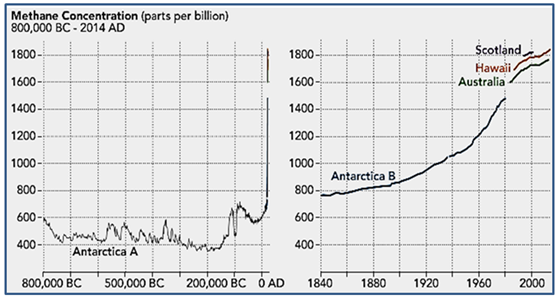

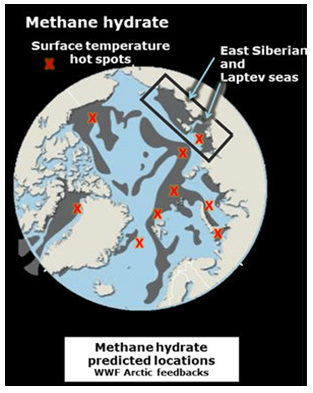
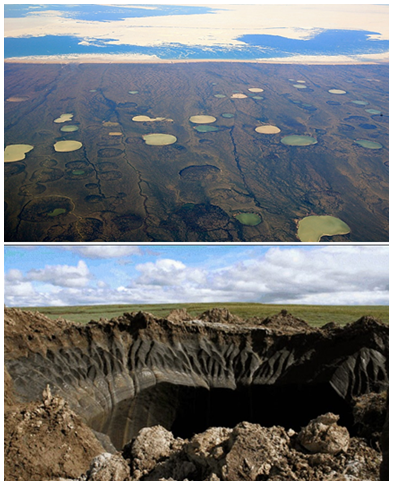
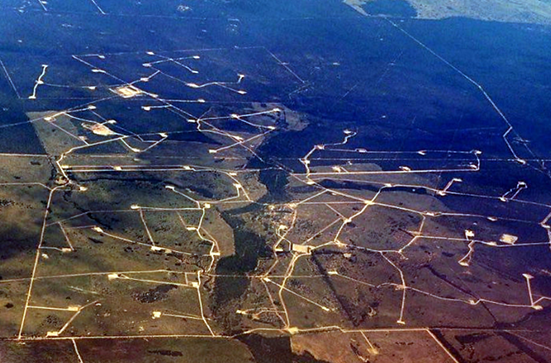
No comments:
Post a Comment
Note: only a member of this blog may post a comment.